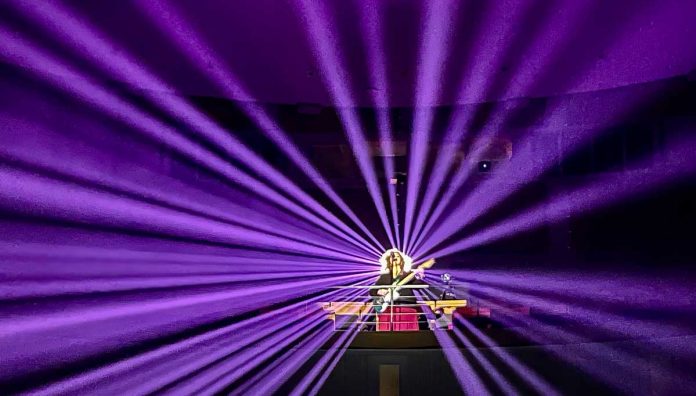The City Recital Hall at Angel Place in the Sydney CBD held a Sydney Sounds Better showcase on July 25, with attendees invited to join a journey that would revitalise the venue.
Opened in 1999 and celebrating its 25th anniversary, the City Recital Hall is a purpose-built live performance venue with world-class acoustics.
Its presenting partners include the Australian Chamber Orchestra, Musica Viva Australia, Australian Brandenburg Orchestra, Pinchgut Opera and Sydney Symphony Orchestra.
With increased cost of living keeping patrons away, competition for funding and low brand awareness, the venue found itself empty for half the year … a problem it reinterpreted as an opportunity to bring people together.
The hall has been renovated and upgraded with the intention of “empowering the next generation of cultural leadership to reimagine the city”.
Its new 360-degree soundscape is diffused to audience members in three seating tiers so the venue can extend its programming to cutting-edge electronica, folk and rock, while enabling cathedral-like ethereal immersion.
Director of Programming Stuart Rogers said the vision was to make City Recital Hall Sydney’s home of live music. It had an amazing acoustic hall that was much admired in the classical world, he said. Now it would be seen as the best in the field for contemporary artists, ensuring the amplified shows would achieve as much acclaim as its acoustic shows.
The Showcase featured performances by Vera Blue, Kee’ahn, Sydney Philharmonia Choirs and the Sydney Symphony Orchestra, and a tour of the new bars and facilities, including the green room, touted as “the best green room you will ever see”.
Recently appointed CEO Kate Wickett said the reignited hall was open for business and would become the venue of choice in Sydney.
There wasn’t a bad seat in the house, she said, and with its new facilities and function rooms the hall had the ability to run a boutique festival in the heart of Sydney.
The hall would demonstrate that the city wasn’t only known for its food and drink but also its culture, she said. There was something for everyone.
The overall message being: “Sydney sounds better with us.”






